Fibonacci Sequence
The Fibonacci sequence is a series of numbers in which each number is the sum of the two preceding ones, usually starting with 0 and 1. The sequence goes: 0, 1, 1, 2, 3, 5, 8, 13, 21, and so on. The sequence was first described in the year 1202 by Italian mathematician Fibonacci in his book Liber Abaci.
Formula
The formula to find the nth term of the Fibonacci sequence is:
Fn = Fn-1 + Fn-2
Where Fn is the nth term, Fn-1 is the (n-1)th term, and Fn-2 is the (n-2)th term.
Properties of the Fibonacci Sequence
- The sequence starts with 0 and 1.
- Each subsequent number in the sequence is the sum of the previous two.
- The ratio of two consecutive Fibonacci numbers approaches the golden ratio, approximately 1.618, as the sequence progresses.
- The Fibonacci sequence has connections to various natural phenomena, such as the arrangement of leaves on a stem, the breeding patterns of rabbits, and the shape of galaxies.
Study Guide
To understand the Fibonacci sequence, follow these steps:
- Memorize the first few terms of the sequence: 0, 1, 1, 2, 3, 5, 8, 13, 21, 34, ...
- Understand the formula Fn = Fn-1 + Fn-2 and how it generates the sequence.
- Practice finding the nth term of the sequence using the formula.
- Explore the connection between the Fibonacci sequence and the golden ratio.
- Research real-world examples of the Fibonacci sequence in nature and art.
By following this study guide, you will gain a solid understanding of the Fibonacci sequence and its applications.
.◂Math Worksheets and Study Guides Fourth Grade. Represent Data
Study Guide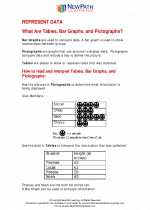 Represent Data
Represent Data  Worksheet/Answer key
Worksheet/Answer key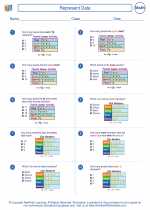 Represent Data
Represent Data  Worksheet/Answer key
Worksheet/Answer key Represent Data
Represent Data  Worksheet/Answer key
Worksheet/Answer key Represent Data
Represent Data  Worksheet/Answer key
Worksheet/Answer key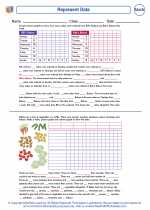 Represent Data
Represent Data  Worksheet/Answer key
Worksheet/Answer key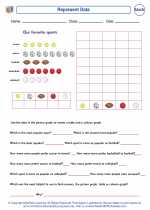 Represent Data
Represent Data  Worksheet/Answer key
Worksheet/Answer key Pie Chart Budget
Pie Chart Budget  Worksheet/Answer key
Worksheet/Answer key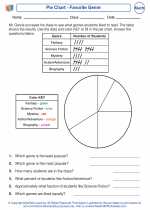 Pie Chart - Favorite Genre
Pie Chart - Favorite Genre 

 Worksheet/Answer key
Worksheet/Answer key
 Worksheet/Answer key
Worksheet/Answer key
 Worksheet/Answer key
Worksheet/Answer key
 Worksheet/Answer key
Worksheet/Answer key
 Worksheet/Answer key
Worksheet/Answer key
 Worksheet/Answer key
Worksheet/Answer key
 Worksheet/Answer key
Worksheet/Answer key

The resources above cover the following skills:
Measurement and Data (MD)
Represent and interpret data.
Supporting Standard: Make a line plot to display a data set of measurements in fractions of a unit (1/2, 1/4, 1/8). Solve problems involving addition and subtraction of fractions by using information presented in line plots. For example, from a line plot find and interpret the difference in length between the longest and shortest specimens in an insect collection.
See the skills and knowledge that are stated in the Standard.